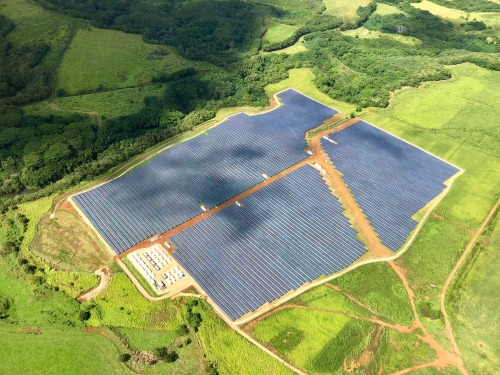Hawaiian Electric achieved 38 percent renewable portfolio in 2021

With geothermal production in full swing and private rooftop solar in the islands on the rise, Hawaiian Electric recently announced that its portfolio hit 38.4 percent renewable energy last year.
It represented a massive rise over the last 11 years, given that in 2010, renewables accounted for just 10 percent of the company’s portfolio. One year before these latest figures – in 2020 – Oahu, Hawaii Island, and Maui County sat at around 34.5 percent for renewables.
While every island has benefited, Hawaiian Electric highlighted Hawaii Island as the top achiever, with a 60 percent renewable portfolio standard (RPS) that increased from the 43.4 percent presented in 2020. This was largely due to the partial production churning out of Puna Geothermal, which has somewhat returned to service after it was taken offline in 2018 due to damage from the Kilauea eruption.
“Everyone owns a piece of this remarkable progress,” Shelee Kimura, president and CEO of Hawaiian Electric, said. “It marks a huge step forward in Hawaii’s transition away from reliance on imported fossil fuels, and by continuing to work with our communities, government, and other stakeholders, we’re confident we can achieve our goal of reducing carbon emissions from power generation 70 percent by 2030.”
Private rooftop solar will likely play a major role in this, given that, in 2021, 4,956 such systems and 56 MW of associated capacity were added to Hawaiian Electric’s five island grids – a 6 percent increase over the previous year. However, this was partially offset by an approximately 2 percent increase in electric sales.
The effects of electricity sale increases were also felt on Maui, where they surged 9 percent last year, largely due to growth in the tourism industry. This was enough to undo the county’s gains in renewable production in 2021, reducing its renewable portfolio standard down to 50.2 percent from its 50.8 percentage in 2020.
On the lowest side of the three islands, Oahu clocked in at a 32.8 percent RPS, up slightly from 30.5 percent in 2020. Partially fueling this was a full year of production at the Na Pua Makani wind facility, which added nearly 7 percent renewable output to the market.
To meet its next state-mandated requirements, Hawaiian Electric’s overall RPS must reach 40 percent by 2030.
